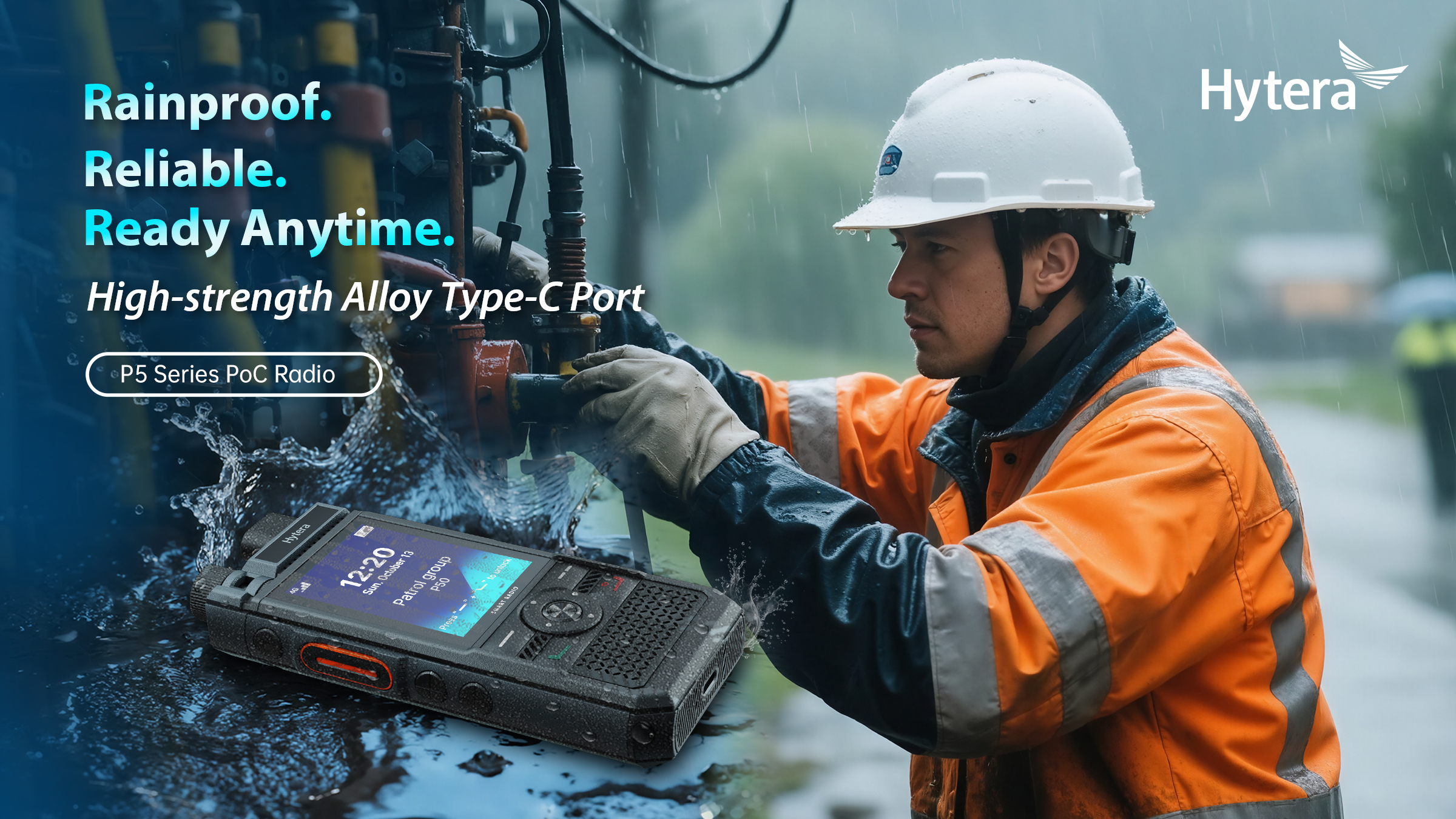Tougher Than You Think: Inside Hytera P5 Series' Waterproof Build
PoC & MCS
Before I joined Hytera, I never gave much thought to waterproofing. Especially not on a radio. I mean—how complicated could it be?
But during a recent new-hire training, one of our industrial designers shared a story that stuck with me.
He had been visiting a client site—an outdoor logistics hub. As he was heading out, he noticed a small but telling habit: a team lead checked the weather, frowned at the clouds, and carefully sealed his radio in a plastic pouch.
“That's when I realized,” the designer told us, “we had to build something that didn't need to be protected. It had to protect itself.” And that insight reshaped how we approached the entire P5 Series.

IP68 Waterproofing, Built from the Inside Out
That moment didn't just inspire a new casing—it sparked a rethink of what "rugged" really means. Because real-world users don't operate in a vacuum. They're out in ports, at construction sites, in rainy parking lots, and dusty industrial yards. Their work doesn't stop for bad weather—and neither should their gear.
And here's the truth: reliable waterproofing doesn't come from a single fix. It comes from layers of engineering working together.
• Internal Waterproof Sealing Ring
This invisible component may not look like much from the outside, but it's essential. Acting as the first line of defense, this sealing ring creates a tight barrier between external moisture and the radio's core circuits.
• Speaker Drainage Structure
Here's something we learned quickly: waterproofing doesn't mean “no water gets in.” It means that if water gets in—it needs a way to get out fast, before it can cause damage. The P5's speaker design includes drainage paths that channel water away from the diaphragm, preventing audio distortion and avoiding that dreaded muffled sound.
• Water-Resistant Materials
Waterproofing isn't just mechanical—it's material. The P5's shell is made of a scratch-resistant and wear-resistant physical material, and the Type-C charging port is specially treated to withstand exposure to moisture and salt, significantly reducing the risk of degradation or short-circuiting. These aren't details most users will ever see—but they'll feel the result every time the radio keeps working after a downpour.
• IP68-Certified Protection
The industry-standard IP68 rating isn't just a nice-to-have. It means the P5 has been tested to handle complete submersion in water and prolonged exposure to dust and dirt. In real terms, it means the radio survives being dropped in a puddle, soaked in a thunderstorm, or used for hours in dry, sandy conditions.
More Than Specs—Confidence in the Field
What all of this adds up to isn't just a technical checklist. It's trust.
You don't always notice waterproofing when it's done right—and that's exactly the point. With the P5, there's no need for ziplock bags, duct tape, or last-minute gear swaps. Just grab the radio, clip it on, and head into the field—knowing it can take whatever the day throws at you.
The beauty of the P5's design is that it allows users to focus on the task at hand—not the gear in their pocket. Whether you're coordinating a delivery under heavy rain or responding to an emergency near a flooded site, you don't have to second-guess your equipment.
That's the true value of thoughtful engineering. It's not about flashy features or overcomplication. It's about building quiet confidence into every surface, seal, and screw—so professionals can work with both hands, no matter the forecast.
83





